
ICF Rankings: By Innovation
The Intelligent Community Forum (ICF) has released a comprehensive ranking of intelligent communities ranked by Innovation, one of the criteria of intelligent communities in the ICF Method.
Some of the names on the list may surprise you, because they are not famous technology centers. ICF measures the innovation potential and progress of a community differently. Being the location for innovation technology businesses is not enough. ICF assesses the ability of the community to generate innovation in business and government for economic but also social and cultural growth. We believe that innovation should benefit, not just the elite few, but the broadest possible range of people and organizations. That’s why our metrics cover: Innovation programs available in the community, from hackathons and business incubators to entrepreneurship training and technology districts.
- Online services provided by local government or public agencies that improve quality of life.
- Degree of collaboration among businesses, government and institutions on an innovation agenda.
- The scope, quality and results of projects aiming to develop a self-sustaining innovation ecosystem in the community.
Communities completing ICF’s questionnaire have the option of requesting a detailed Metrics report comparing them on multiple factors to the Forum’s global data set on Intelligent Communities. See Community Accelerator for details.
The ICF Rankings: Innovation 2019 list is the latest publication in ICF’s By The Numbers series. It provides a useful guide to the relative strengths of communities in ICF’s network, and an inspiration for greater progress in coming years. Future By the Numbers rankings of intelligent communities will be released by ICF in the coming months.
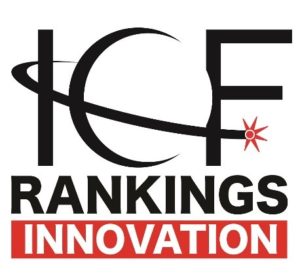
1. Montréal, Quebec, Canada
The largest French-speaking city in North America, the Montréal Metro Area is home to more than a tenth of Canada’s population. The region was hit by the decline of heavy industry in the Eighties, and launched a large-scale transition of its economy to ICT, aerospace, life sciences, health technologies and clean tech. Together, these clusters contain more than 6,250 companies employing about 10% of the workforce.
Montréal’s innovation quarter, the Quartier de l’innovation (QI), was launched in May of 2013 by two universities: the École de technologie supérieure (ÉTS) and McGill University and is now evolving to include Concordia University as well. The QI is an innovation ecosystem in the heart of Montréal designed to boost the city’s potential for creativity by combining the strengths of many education institutions and businesses in one place.
The QI boasts 250 companies employing 20,000 people with the largest concentration of information technology and multimedia workers in all of Canada. As it continues to grow, the QI helps the nearby area grow with it by drawing new businesses and residents, leading to a total of $6B in property development and municipal investment since its inception. As entrepreneurs and new companies move into the area, the QI works to aid in cross-pollination of ideas and in helping them get off the ground. The area currently houses six startup incubators, including the Centech (technological entrepreneurship center) and the CEIM (Montréal business and innovation center). The CEIM offers customized management support and related services for startups in information technology, new media, life sciences and clean industrial technologies, while Centech provides support for ventures in manufacturing technology.
2. Espoo, Finland

In the far northern nations of the world, people tend to cluster southward. Espoo, Finland’s second largest city, lies on the border of its biggest city and national capital, Helsinki. Both stand on Finland’s southern coast, directly across the Gulf of Finland from Tallinn, a frequent Top7 Intelligent Community and the capital of Estonia.
In 1950, Espoo was a regional municipality of 22,000. Today, it is an industrial city of 270,000 in one of Europe’s leading countries for ultra-broadband adoption. In such an advanced broadband economy, it is natural that the Intelligent Community of Espoo would take a next-generation approach to improving broadband access and adoption. With the explosive growth of mobile data, driven largely by video, the city sees a serious risk of capacity bottlenecks threatening city digital services and throttling the future online experience of residents. Its answer is LuxTurrim 5G, a three-year pilot project that engages Espoo companies and research institutions in evaluating smart light poles as transmitters for 5G, the emerging mobile standard that promises hundreds of megabits per second of service. The light poles will include miniaturized 5G antennas and base stations, sensors for smart city systems and digitally controlled LED lighting. Launched in the spring of 2017, the project aims to create a proof-of-concept for the technology integration and then to start building an export business for the city’s partner companies.
3. Melbourne, Victoria, Australia

Melbourne is Australia’s second largest municipality and the capital of the state of Victoria. A leading financial center, this city of 130,000 is at the center of a metropolitan area of 4.5 million people and is hub for the Australian film and television industries. In 2016, The Economist named Melbourne as the world’s most livable city for the sixth year in a row.
Two projects are equipping Melbourne with new innovation districts. The Advanced Manufacturing Precinct at RMIT, a public research university, creates collaborative projects between researchers and industry, and equips them with technology and equipment to speed up prototyping and design of the manufacturing process. The Carlton Connect Initiative (CCI) aims to bring together people from diverse disciplines to one precinct, where CCI will create and curate partnerships between research and industry locally, nationally and globally. It has established the Melbourne Accelerator Project, whose 24 startup teams have already created 150 jobs and generated A$10 million in revenue. When CCI is complete, it will be Australia’s largest innovation district and home to the Melbourne School of Engineering.
Like many successful cities, Melbourne faces sharp increases in its cost of living and a shortage of affordable housing, both of which contribute to the problem of homelessness. Though the city offers a wide range of support services finding is difficult for the homeless because information can be outdated, waiting lists long and the rules complex. Melbourne’s answer is Ask Izzy, a new mobile website that connects the homeless, or those at risk of homelessness, with essential services. Research showed that 80% of people experiencing homelessness in Melbourne own a smartphone. Ask Izzy is a free location-based directory that helps them find food, shelter, health and other critical services.
4. Waterloo, Ontario, Canada

Waterloo is the smallest, geographically speaking, of seven cities that make up Canada’s Technology Triangle. Small in size it may be, but this second-time Top Seven honoree casts a big shadow in terms of technology-based growth. The Triangle itself is home to 334 technology companies and another 404 providing related services that employ about 10% of the labor force, but account for 45% of job growth.
The third “right thing” in Waterloo is a culture of collaboration and reinvestment. Perhaps because cooperation among business, academia and government has been so successful, folks in Waterloo make partnership a priority and are eager to give back to the community. Waterloo-based Tech Capital Partners manages C$95 million in venture capital for early-stage companies, while a group of business leaders has recently launched Infusion Angels to find and fund ideas from University of Waterloo students and alumni. UW and Wilfrid Laurier jointly run a Launchpad $50K Venture Creation Competition for students, researchers and community members who develop business plans and start successful businesses. Successful entrepreneurs have also reached into their pockets to fund or contributed their time to the founding of the Center for International Governance Innovation (CIGI), the Perimeter Institute for Theoretical Physics, Institute for Quantum Computing, Center for Wireless Communications, the Waterloo Technology StartUp Network, and Communitech, a capacity-building association focusing on technology in the region. Each fall, the Waterloo region celebrates Entrepreneur Week, North America’s largest innovation festival.
5. Toronto, Ontario, Canada
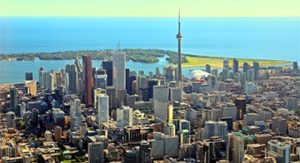
Toronto has both the assets and the liabilities that come with being Canada’s largest city. On the asset side is its diverse economy, with key clusters in finance, media, ICT and film production, and success as a magnet for immigrants that have made it one of the most multicultural cities in the world. Major carriers offer high-quality broadband to 100% of residents, and its five major universities and multiple colleges have attracted 400,000 students and helped ensure that Toronto has more residents with undergraduate degrees that London.
Toronto is doubling down on the value of a dense, superbly equipped and culturally rich urban experience. The centerpiece is Waterfront Toronto, North America’s largest urban renewal project, which is revitalizing 800 hectares of brownfield shoreline with 40,000 residential units, parks and one million square meters of commercial space designed to the highest environmental standards. Though impressive in size and scale, the Waterfront is only the most visible of many public-private collaborations through which the city is pursuing an ICT-powered future. The MaRS Discovery District supplies housing, incubation, acceleration and investment services to hundreds of early stage portfolio companies downtown, while the Ryerson University Digital Media Zone gives entrepreneurs space and services to move great ideas to initial commercial success. The Centre for Social Innovation does the same for social innovators and its successful model has led to operations across four locations in two countries.
6. Chiayi City, Taiwan

Chiayi is a provincial city of 270,000 in southcentral Taiwan, midway between Taichung and Tainan. Ninety-five percent of its economy is in the services sector – wholesale and retail, transportation and warehousing, and accommodation and food – which employs three-quarters of the workforce.
Chiayi government and private carriers have blanketed the city with 1,000 Wi-Fi hotspots, ranking second for density in the nation. Over an 18-month period, more than 1.5 million users accessed the network. Chiayi also completed an open data platform in 2016, which contained 279 information entries as of August 2017, with many more on the way. The city has also established an E-Service Counter that provides single sign-on to more than 500 applications used by 210,000 subscribers.
The city attracts more than 440,000 tourists every month, who contribute over NTD 1 billion every year. Innovation in Chiayi has focused on finding ways to use its success in tourism to drive further growth in the economy. The city is home to Taiwan’s largest egg company, Chinyi Eggs, which ships nationwide. Recently, the company has transformed its Chiayi facilities into a “tourism factory.” The company already turns over more than NTD 1 billion but, with the help of government investment, is creating a new line of business opening up its processes to visitors.
To encourage youth training and development in particular, the city has worked with Wufeng University and the Chiayi Youth Entrepreneur Association to hold the National Youth Creative Application Competition. The competition includes high school and college-level student teams competing on creative projects designed to teach them business values. The government has also begun setting up co-working spaces to encourage young entrepreneurs to mingle and share ideas as well as find investors. Idle spaces are being renovated throughout the city to provide better co-working environments, including the “KY 3-27 Co-Working Space,” which is the first publicly operated co-working space in the Yunlin-Chiayi-Tainan region.
7. Sunshine Coast, Queensland, Australia
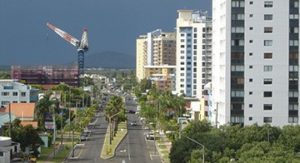
The Sunshine Coast is a metropolitan area that spreads across 2,291 square kilometers of Australia’s coastline about 100 kilometers north of Brisbane. A sub-tropical paradise of beautiful beaches and scenic mountains, the Coast has experienced boom times and almost doubled its population since the 1980s from tourism and retirement relocation, which drove the growth of construction and retailing. But the ebbing of the commodities boom that fueled Australia’s economy has revealed the fragility of the local economy. Population growth has slowed to below the state average and demand for tourist accommodation has fallen year after year, creating an above-average unemployment rate that hits particularly hard on youth. The community has tackled these troubles by building an ideal climate for local innovation.
Between 2014 and 2016, the Sunshine Coast has grown from having only one innovation center and public co-working space to seven co-working spaces, a new business incubator and five coding programs. The city council has taken a leading role in digital engagement to make this possible, including setting up the Entrepreneurship Ecosystem mapping project to coordinate and grow the local network of co-working spaces and programs. The map shows budding entrepreneurs where they can find support and resources from the government and business community as they start their businesses and provides an easy way for businesses to communicate and collaborate throughout the region.
The Sunshine Coast Innovation Centre, established in 2002 as a wholly owned subsidiary of the University of the Sunshine Coast, serves as central hub for startups in the city with dedicated facilities, a prototyping lab, powerful online platforms, grants and seed funding connections and readily available mentors for new startup companies. Over 40 businesses are located at the Innovation Centre as of 2017, and more than 160 have graduated from startup incubator and accelerator programs since the center’s establishment with 89% still operating successfully.
8. Taitung County, Taiwan
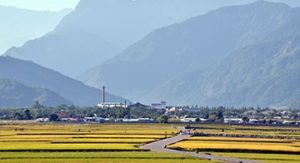
Taitung is Taiwan’s third-largest county by area and home to 224,000 people. Spread across the mountainous southeast coast of the island, it was a thinly-populated economic backwater through most of the 20th Century, while the northwest coastal plains became the center of Taiwan’s remarkable economic rise. Agriculture and tourism are its dominant industries. Because it was the last region of Taiwan settled by the Han Chinese in the 19th Century, it has also retained much aboriginal culture, which makes its own contribution to tourism.
The county leveraged its impressive hotspot network to create a Smart Travel Service Plan that aggregated its own data with third-party services like TripAdvisor in a single mobile portal available on the app stores in multiple languages. It also helped six major tourist sites to install systems that generate constantly updated guide maps and navigation tips that can be pushed to the phones of tourists. One of the county’s biggest events is a hot air balloon festival, which attracted 350,000 tourists in 2011. Just one year later, attendance jumped to 830,000. The major tour sites of Taitung received six million visitors in 2013, up 44% from 2009. While the number of hotels grew, the average occupancy rate also leaped to third in the nation. Developments like these caused the outflow of population from the county to reverse for the first time in years in 2014.
The county also has a long cultural and industry legacy in woodworking. Working with industry, universities, researchers and the national government, it is now planning a Maker Park to help entrepreneurs apply technology to launch innovative woodworking businesses.
9. Winnipeg, Manitoba, Canada

Located at the midpoint between East and West Coasts, Winnipeg is the capital of a province rich in agricultural and natural resources. In the 21st Century, the city is pursuing economic growth by better connecting industry and education, while better equipping its large aboriginal population for opportunity.
The North Forge Technology Exchange is an innovation-based economic development agency in Winnipeg that provides entrepreneurs with award-winning mentors, subject-matter experts and a two-stage startup program that includes business training and access to financing. It was conceived by the teams behind The Eureka Project, AssentWorks, Ramp Up Manitoba and Startup Winnipeg working in collaboration. The North Forge Technology Exchange is Canada’s largest non-profit fabrication workshop, providing access to digital fabrication and prototyping equipment as well as training and support. Its services include cloud hosting for development servers, web servers, file servers and production environments; the UX Lab, which offers assistance with user and usability testing and stakeholder interviews; the Advanced ICT Lab, a digital maker space; and a subscription market intelligence platform. As of September 2016, the North Forge Technology Exchange has produced 2550 developed prototypes, 75 new businesses, over 75 new jobs and $175 million in new revenue.
Winnipeg has formed partnerships linking employers like Canadian Tire to the University of Winnipeg, an ICT association and other public-private groups to improve the supply of skilled employees. The Composite Innovation Centre (CIC), a public-private R&D organization, has developed technologies and supply chains for high-performance composites based on agricultural materials such as hemp and flax, which reduces costs for employers like Boeing and Magellan Aerospace. CIC’s success has led to the creation of a national consortium, Canadian Composites Manufacturing R&D, to conduct pre-competitive R&D for multiple companies. CIC also has a training program that gives Winnipeg students on-the-job experience and supports skills development in companies.
10. Austin, Texas
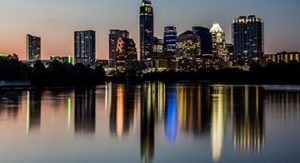
In the late Eighties, fourteen semiconductor manufacturers and the US government created a partnership called SEMATECH to solve common manufacturing problems. The selection of Austin as its headquarters sparked a technology boom. Growth was so robust for so long that the Austin economy began to look recession-proof – until the dot-com collapse of 2001 tripled the unemployment rate.
In response, city government partnered with the Chamber of Commerce on a long-term economic development strategy that led to a nearly $6 billion increase in regional payrolls over five years. A second five-year plan launched in 2010 seeks to add another $11 billion. Austin’s successful tech companies – including such major names as Freescale, Samsung, Facebook, eBay and Altera – are bolstered by rates of Internet access far exceeding US averages, a highly educated workforce and the presence of multiple universities. But achieving the 2015 goal will take more than repeating the past.
The City Council has also created an Emerging Technologies Program to provide a single point of contact for entrepreneurs, tech businesses and Austin’s many incubators. It offers consulting, matchmaking and expert advice on where in Austin to find the resources a growing company needs.
![]()
![]()
Want to have a voice in iCommunity.ca, the official newsletter of ICF Canada? Please send your blogs, announcements and other interesting content to John G. Jung at [email protected]

ICF Canada 1310-20 Bay Street Toronto, Ontario M5J 2N8 www.icf-canada.com
Contact: John G. Jung at [email protected] 1-647-801-4238 cell
Want to change how you receive these emails?
You can update your preferences or unsubscribe from this list
